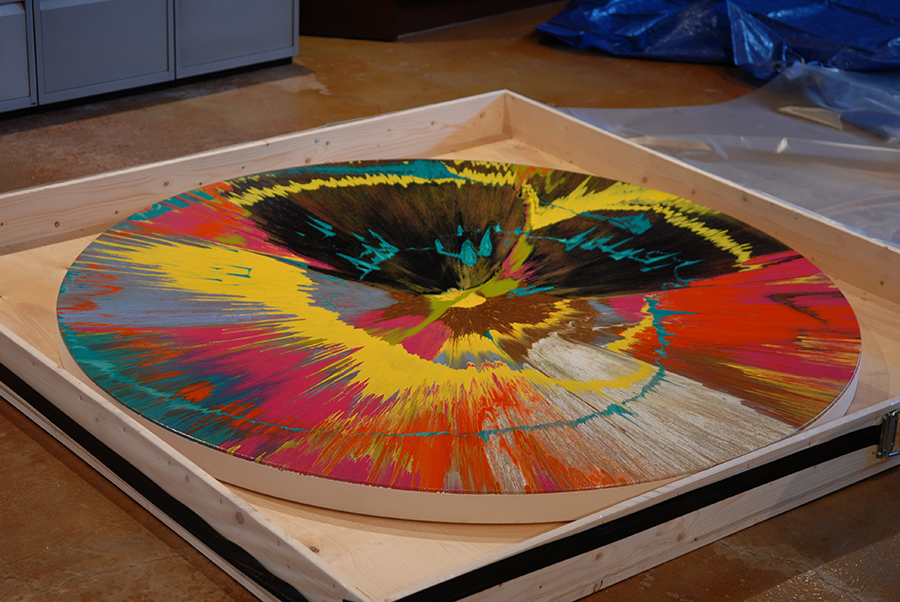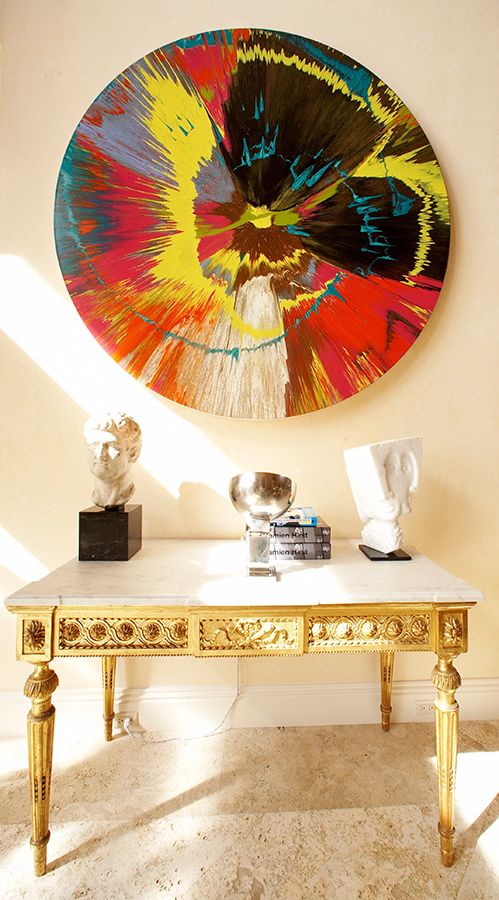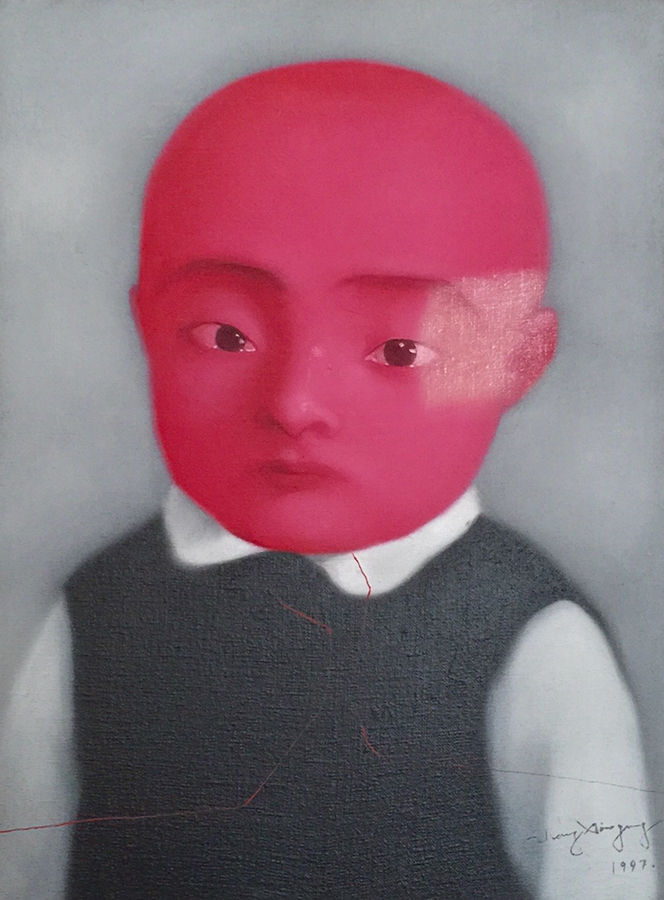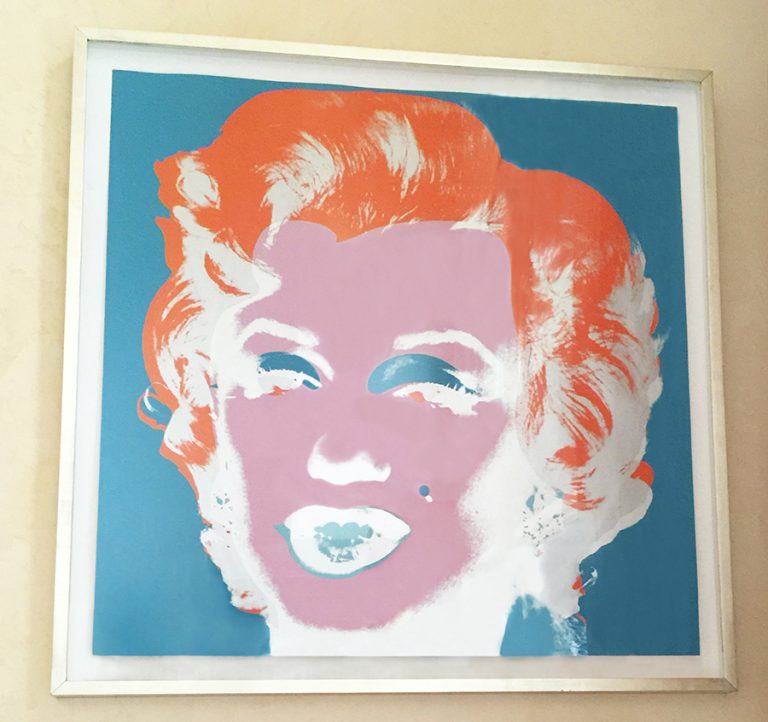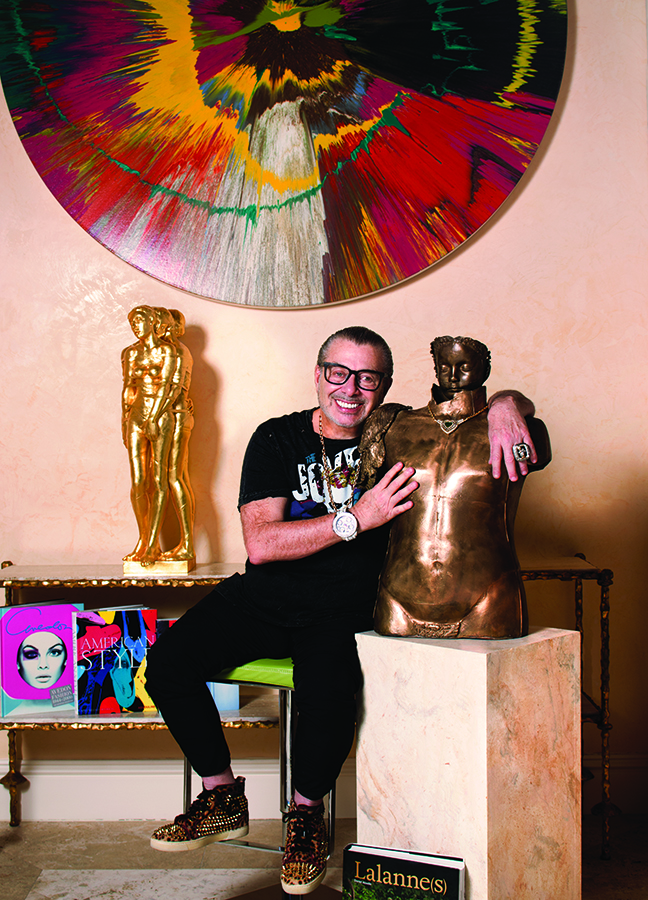

A successful and controversial artist, Damien Hirst was born in Bristol, England, on June 7, 1965. He emerged as a leading figure in the Young British Artists movement in the late 1980s and 1990s. His works, which include dead animal displays and spin-art paintings, have sold for exceptionally high prices. Hirst is one of the wealthiest artists living today. [1]
Hirst first experimented with spin art in 1992 at his studio in Brixton, London (‘Beautiful Ray of Sunshine on a Rainy Day Painting and Beautiful Where Did All The Colour Go Painting’ (1992)). The following year, he set up a spin art stall with fellow artist Angus Fairhurst at Joshua Compston’s artist led street fair, ‘A Féte Worse than Death’. Made up as clowns by performance artist Leigh Bowery, Fairhurst and Hirst invited visitors to pay £1 to create their own spin paintings to be signed by the pair, (and another £1 to drop their trousers and reveal their painted cocks and bollocks!)
The spin paintings are characterised by the works’ elongated titles, which begin with ‘Beautiful’ and end in ‘painting’, and their bright colours. The series began in earnest in 1994, when Hirst had a spin machine made whilst living in Berlin. A series of his machine-made spin drawings were subsequently exhibited at Bruno Brunnet Contemporary Fine Arts, Berlin, later that year. The exhibition ‘making beautiful drawings: an installation’, invited visitors to the gallery to make their own free drawings on a spin drawing machine made from a drill. The first Berlin-made spin painting exhibited was ‘Beautiful, pop, spinning ice creamy, whirling expanding painting’ (1995), at the Waddington Gallery, London, in 1995.
The works are described by the artist as “childish … in the positive sense of the word”. Whilst the chance spontaneity of the spin paintings stands in stark contrast to the formulaic spot series, both explore the idea of an imaginary mechanical painter. The results of the spins are controlled purely by the artist’s colour choices and the motion of the machine. Hirst explains the simplicity of their appeal: “I really like making them. And I really like the machine, and I really like the movement. Every time they’re finished, I’m desperate to do another one.”
In 1996, the exhibition ‘No Sense of Absolute Corruption’ (Gagosian Gallery, New York) included spin paintings which rotated mechanically on the wall – Hirst’s response to being repeatedly asked which way up they should be installed. The rotating spins also provided a solution to Hirst’s feeling that the implied movement is essential to the success of the works, noting: “The moment they stop, they start to rot and stink.” [2]
Credit: Exerpts: biography.com[1]; DamienHirst.com[2]
In the Leland Hirsch Private Collection
DAMIEN HIRST
Beautiful Barbed Wire Entwining Itself In A Free Stream of Consciousness
2005
Oil on canvas
72 x 72 in.
